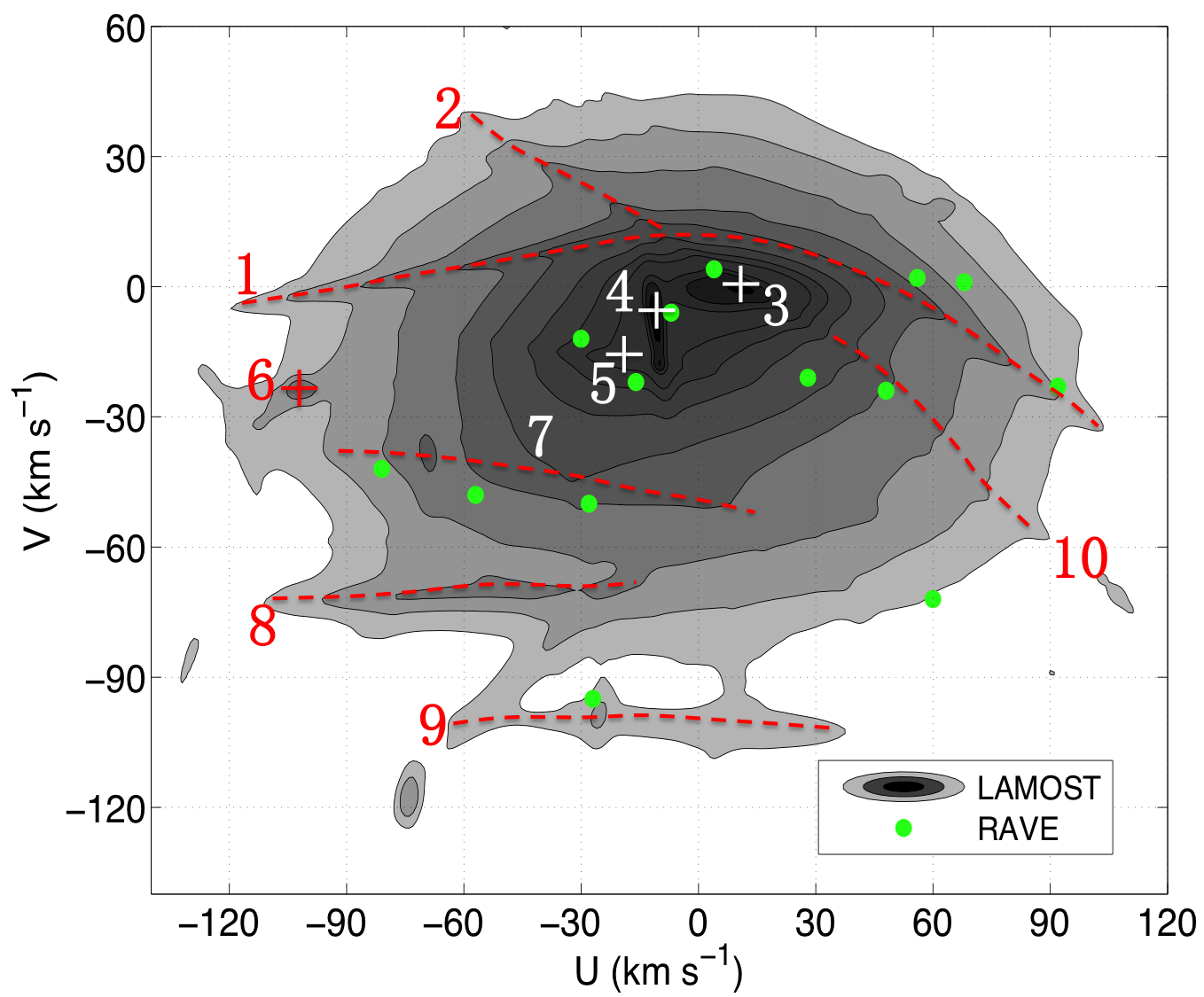You are here
The velocity distribution in the solar neighborhood from the LAMOST pilot survey
Xia Qiran etc. use about 15 000 F/G nearby dwarf stars selected from the LAMOST pilot survey to map the U–V velocity distribution in the solar neighbourhood. An extreme deconvolution algorithm is applied to reconstruct an empirical multi-Gaussian model. In addition to the well-known substructures, e.g. Sirius, Coma Berenices, Hyades–Pleiades overdensities, several new substructures are unveiled. A ripple-like structure from (U, V) = (−120, −5) to (103, −32) km s−1 is clearly seen in the U–V distribution. This structure seems associated with resonance induced by the Galactic bar, since it is extended in U while having a small dispersion in V at the same time. A ridge structure between (U, V) = (−60, 40) and (−15, 15) km s−1 is also found. Although similar substructures have been seen in the Hipparcos data, their origin is still unclear. Another compact overdensity is seen at (U, V) = (−102, −24). With this large data sample, we find that the substructure located at V ∼ −70 km s−1 and the Arcturus group are essentially parallel in V, which may indicate that they originate from an unrelaxed disc component perturbed by the rotating bar.

